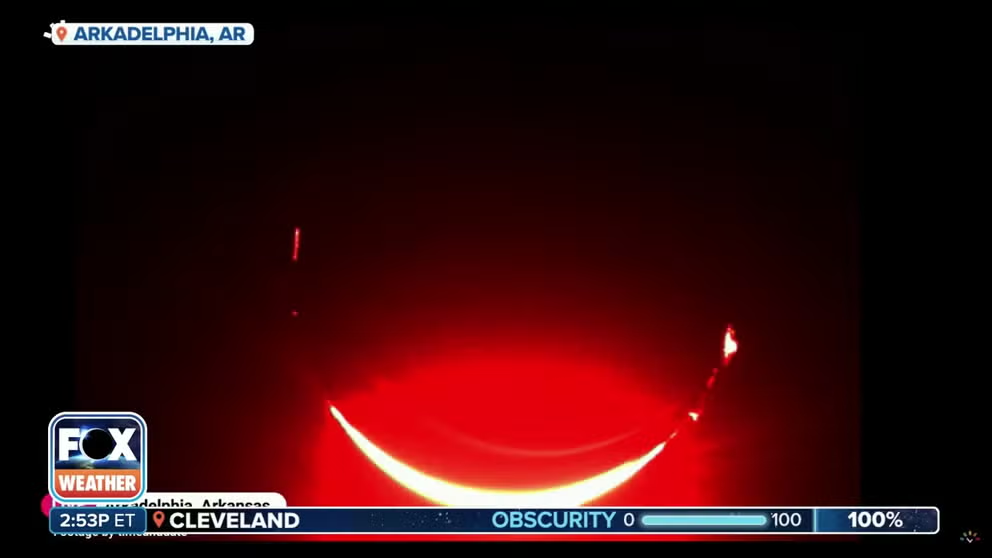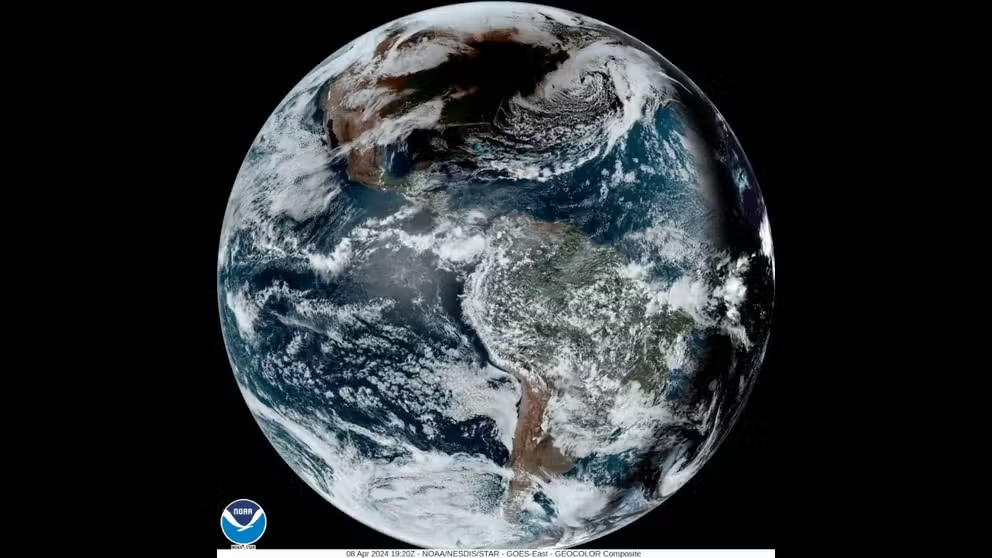Astronauts get eerie view of Moon’s shadow as it trudges across Earth during solar eclipse
The astronauts living and working on the International Space Station orbit the Earth about every 90 minutes, witnessing 16 sunrises and sunsets day, along with up to five eclipses a year. On Monday, the massive black hole from the Moon's shadow could be seen from space down on the planet below.
Watch: Colorful eclipse in Arkadelphia, Arkansas
Stephen Morgan and Kendall Smith take us to Arkadelphia, Arkansas during totality. The video is saturated with color.
Astronauts on the International Space Station had an eerie view during the total solar eclipse on Monday as the Moon's shadow raced across the planet's surface.
Waiting for totality on Earth took more than an hour after the partial eclipse began, but the low-Earth orbit's view provided context for how fast the Moon's shadow is moving. According to NASA, the eclipse shadow travels at 1,100 mph at the equator and up to 5,000 mph near the poles.
AMERICA’S TOTAL SOLAR ECLIPSE DAZZLES COUNTRY AS MILLIONS SCRAMBLE TO FIND BEST VIEW
The astronauts living and working on the ISS orbit the Earth about every 90 minutes, witnessing 16 sunrises and sunsets in 24 hours and up to five eclipses a year.
On Monday, the astronauts could not only see the eclipse as the Moon blocked the face of the Sun, but the Moon's shadow down on Earth as it blocked the sunlight over the path of totality – looking like a floating black hole on Earth down below.
The ISS wasn't the only view of the solar eclipse from space. SpaceX founder Elon Musk shared the video below, which was taken by a Starlink satellite in low-Earth orbit.
MISS THE APRIL 8TH TOTAL SOLAR ECLIPSE? HERE’S A LIST OF FUTURE CELESTIAL EVENTS
The video shows the Moon's umbra or shadow as it moves across the planet.
While the Moon was moving in front of the Sun's face, solar and Earth-observing spacecraft recorded the eclipse in real time.
NOAA's GOES-East satellite tracked the Moon's shadow moving across the Pacific Ocean and North America while the European Space Agency's Proba-2 satellite recorded the eclipse looking toward the Sun.
NOAA satellite captures total solar eclipse moving across America
Different views from NOAA's GOES East satellite show the umbra or shadow of the Moon during the eclipse sweeping from the Pacific Ocean to Atlantic Canada. (video credit: NOAA)

